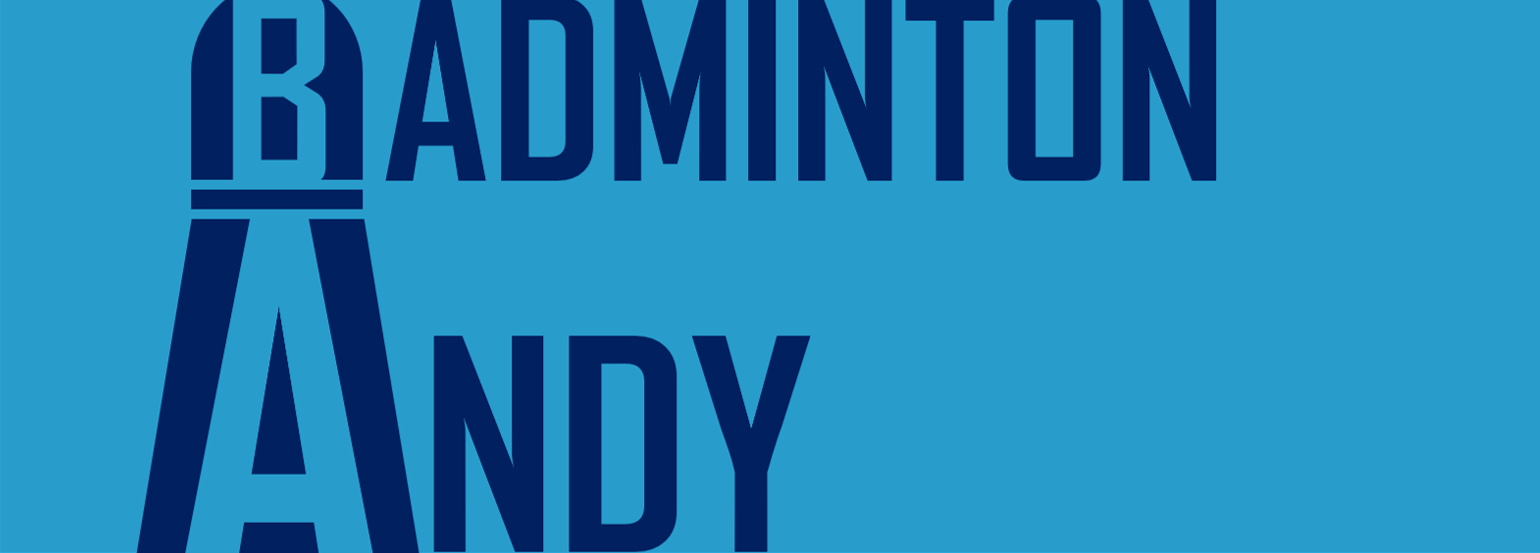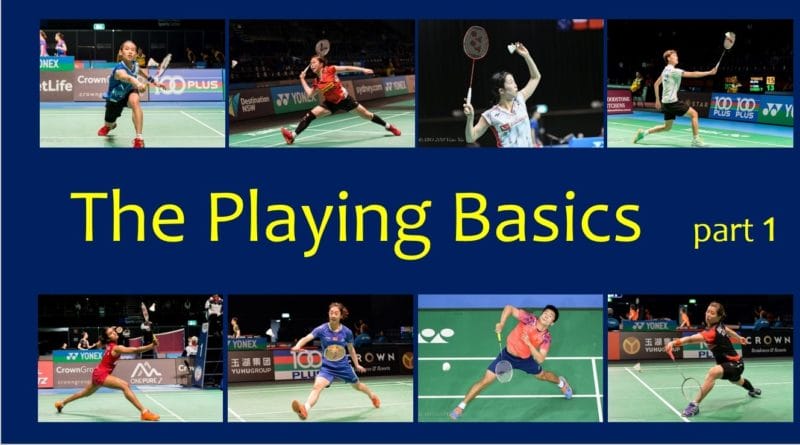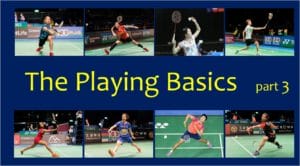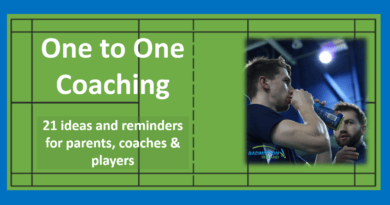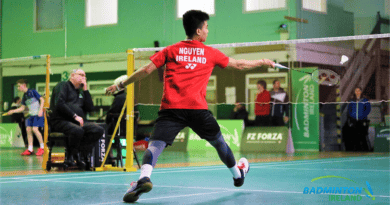What are the Badminton Playing Basics (Technical) : Part 1 of 4
Part 1 : The Introduction
“We need to identify the Badminton Basics!
What do you think the core technical skills are?
Those components that underpin all strokes and movements”
I had an afternoon to prepare a list!
What would you say?
I somehow ended up with this challenge at the end of a week of coaching in Denmark with my good friend and mentor Roger Mills. He insisted that we should be able to produce a list of Badminton Basics (Technical) that underpinned all strokes and movements. Not a list of strokes, but their components. The aspects that were fundamental to success.
This post will be in 4 parts as I would like to give you time to consider and try out the content. Hopefully, you will find that every time you read them you create new thoughts and questions.
It is probably one of the most influential documents I ever been involved in.
The list below describes only Technical Badminton Basics. Roger later produced a Tactical list called ‘MATCHPLAYS’. There will a future post setting out the tactical basics. In my opinion, it is equally powerful and thought provoking.
– – – – – – – – – – – – – – – – – –
How you can use the ‘Playing Basics’
I use the concepts presented in all my coaching work. In the future, I will write about how I try to each of the 10 points in my daily coaching. They help me to understand how to create great foundation skills and also to identify where errors originate from, then to start a correction.
If you are looking for ways to develop some of the Badminton core technical skills then I hope that you will find something to interest you.
Each time I started with a new player I realised how much I was using the Playing Basics to develop skills without specifying a stroke or movement. These 10 points also helped me become aware of those fundamental technical errors that were limiting development.
Then I started to plan ahead to try and avoid or prevent some of these errors by using the concepts listed in the 10 points.
– – – – – – – – – – – – – – – – – –
The first coach
A players first coach will usually be the most significant in their development
I heard this statement many years ago and it took me a while to understand what it meant
Eventually, I realised it was because major changes or corrections in technique are very difficult to successfully make, once a pattern has been established. Motivation can be influenced, habits can be developed but an inappropriate technique that limits development could block many future improvements.
The Playing Basics will guide you in developing essential underpinning techniques. I am not suggesting that a players first coach should seek perfection, no that is not the goal! But if you allow or ignore some (inappropriate) techniques then they can be very difficult to correct or change.
Good or near correct patterns can be improved but some imperfect techniques seem to stay around no matter what you do to remove them.
I hope that I’ve explained that well enough?
How many ‘classic’ technically limiting faults (errors) can you name?
Could you write out a list of those inappropriate techniques you wish would never appear in your junior players.
I hope that you have already thought of the ‘Pan Handle grip’.
If you establish most of the Playing Basics I promise that many of the ‘faults’ on your list will never appear
Coaches should strive to have a thorough knowledge of the basics of teaching and playing in order to establish many of the general patterns.
I hope that these Playing Basics will help you increase your understanding of these generalised patterns of movements and striking.
For me, they provide a mini framework to devise challenges and practices
All this can be done before introducing ‘named’ badminton strokes and movements.
Using these Playing Basics has helped me to establish some core elements in a simpler way than traditional teaching using named strokes.
The problem is that game-like movements and strokes are generally complex and large in nature. They contain many moving parts that all need to be appropriately timed and sequenced. Plus there are the subtleties such as how to hold the racket, and use of body shapes.
Concentrating on developing a few of the Playing Basics in warm-ups, mini-games, small hitting games/tasks, will give you an opportunity to develop these elements before trying to work on named strokes.
Doing something that introduces skills that then moved seamlessly into strokes is your aim
Using the Playing Basic concepts you will reduce the chance of a limiting technical fault from forming!

– – – – – – – – – – – – – – – – – –
I apologise now, there are no strokes here
If you are expecting a list of strokes plus a teaching order, I’m sorry you won’t find one.
The statements describe the components of hitting and moving skills, but not strokes. Some components are nearly complete skills whilst other form smaller but critical aspects of larger more complex movements. Your challenge will be how to introduce these with your young developing players.
In the future, I will write about using these ideas, look out for the post called how you can use each of the 10 points
– – – – – – – – – – – – – – – – – –
The list
Below is a suggested list of basic skills of hitting and moving that have been placed in a suggested order of importance which a player will require to become proficient at badminton. They will form the foundation and building blocks during a players development.
Hopefully, they will prevent or even eradicate many of those technically limiting faults we see in new players.
What images do you create in your mind as you read each one? I recommend that you pause after each one and reflect on the pictures in your head, the images you are creating at this moment.
1 Hitting at a balanced extreme range from the body
2 Hold the racket with a sideways grip
3 Early preparation
4 Hand cocking for power
5 Pretension in starting and moving
6 Categories of 4 main hitting actions
7 Legs and arms wide for balanced movements
8 Lunging timing principles
9 Sideways turning just prior to contact with the shuttle
10 Contact at the highest point
Which of the points above can you see in the images below.

All are great photos of World Class players so study them hard and please let me know what you see.
In part 2 we will explore the first 4 of the Badminton Basics and take a deeper look at what they mean and how you could use them.
– – – – – – – – – – – – – – – – – –
As always, I’m very grateful if you have read this far 🙂
I hope you enjoy reading about these Badminton Playing Basics
If there is anything that you’ve read that has helped or that you disagree with then please send me an email.
I’d love to hear your views contact@badmintonandy.com
